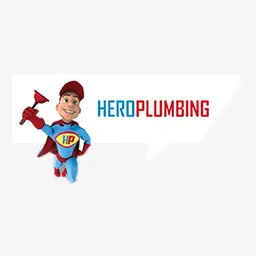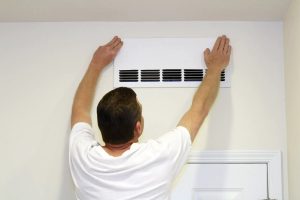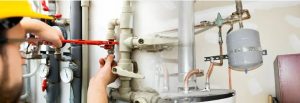Table Of Contents
What Are Gas Wall Heaters?
Wall heaters are simply heating equipment that is directly attached to or put in a wall. They are most typically found in studio flats, small living spaces, and small offices because they produce enough heat to keep small spaces warm while taking up no vital floor space.
In the 1950s, wall furnaces became more popular as a replacement for radiator-style or baseboard heating systems. Installing wall furnaces directly on the walls allows for free-flowing heat. A pilot light is used to light gas heaters from the bottom. They are a less expensive option than electric wall warmers.
Earlier, gas wall heaters needed a ventilation system; however, modern ventless gas wall heaters were developed later to remove the extra ventilation that some people found inconvenient. In this informative article, you are going to discover the different types of wall gas heaters and their workings.
The Various Types Of Gas Wall Heaters
Convection and Radiant Heaters
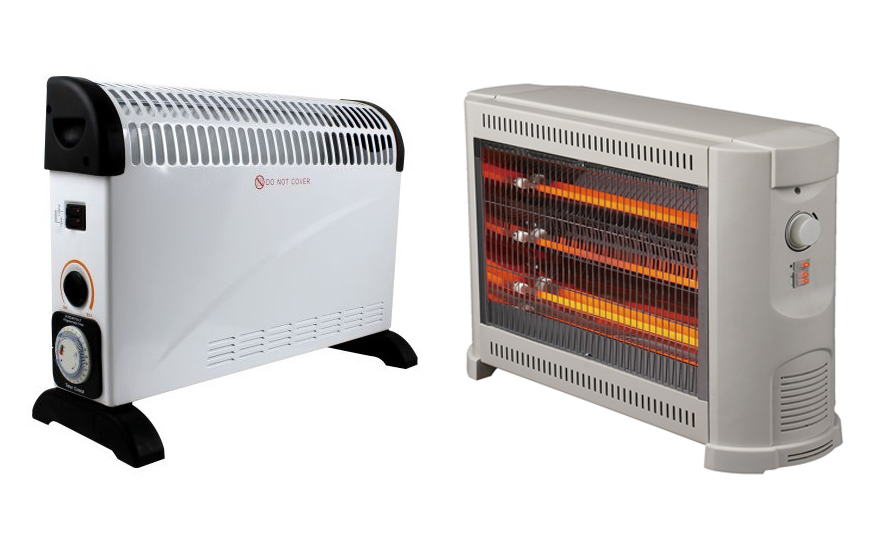
Gas wall burners can use either convection or radiant heat to heat the room. In the context of radiant heat, a ceramic panel is heated by natural gas or propane. The heat is then radiated into the space by this super-heated panel. This form of heat immediately warms the inhabitants of a room.
Gas heating that employs convection to warm a space works by heating air with a gas-produced flame. With the use of a fan, the warm air is then blown into the room. Convection heat warms a room’s air, and this, in turn, warms the people inside.
Vented and Ventless Heaters

Gas wall heaters can also be categorised into two: vented and ventless. Vented heaters use outside oxygen to continue the burning process; this air is brought into the heater through a duct in the bottom. Harmful carbon monoxide produced due to the burning process is expelled through a vent at the top of the burner and taken to the outside via an exhaust pipe, where it dissipates harmlessly outdoors.
Otherwise, a ventless wall heater takes oxygen from the air within a room to fuel burning. The heated exhaust is subsequently convectively or radiantly recirculated back into the room. Because of the direct venting mechanism, a ventless wall heater is exceptionally efficient, as practically all of the heat it produces stays within the room. In contrast, a vented gas wall burner exhausts a significant amount of heat to the outdoors.
Modern ventless wall heaters include an oxygen depletion detector that immediately turns off the heater if it senses dangerously low oxygen levels in the area. A ventless gas wall heater is best used in well-ventilated spaces.
Blue Flame Heaters
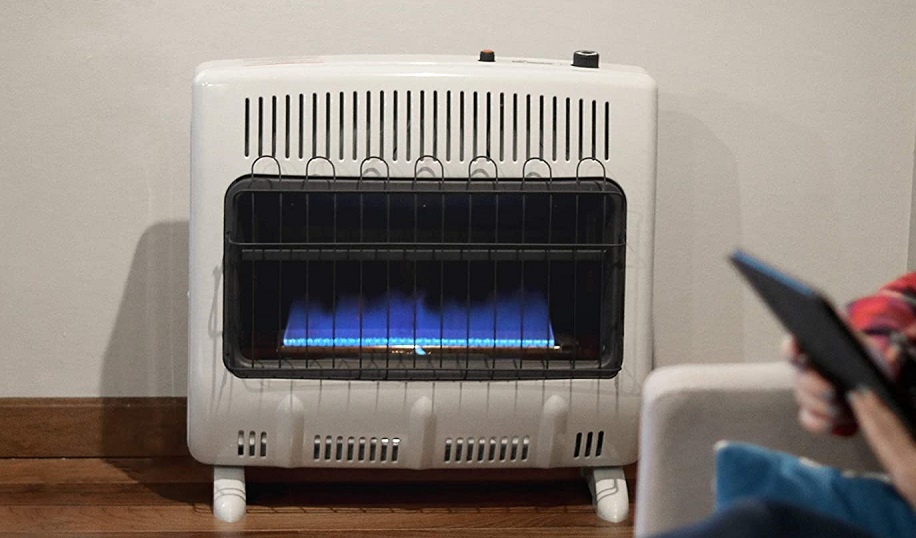
A blue flame heater works by heating the air rather than the objects inside the room. Blue flame heaters are a much more fuel-efficient option and are ideal for insulated environments. They may take a little longer to heat up, but they are a more efficient option. These cost-effective units typically have a 99.9% efficiency rating. A blower is usually included in these devices to help distribute the heated air throughout the room.
Wall Furnaces
Wall furnaces are a type of vented heater put in between the studs of a wall and the drywall of a room. They function by taking cool air in from the base, heating it, and releasing it at the top. Home extensions, apartments, and smaller homes frequently use wall furnaces.
How Do Ventless Wall Gas Heaters Work?
Traditional heaters rely on an unrestricted flow of outdoor air to promote combustion since all combustion heaters need oxygen for their combustion process. Furthermore, some combustion heaters, like pellet stoves, do not entirely burn away the source of fuel.
As a result of the burning process, smoke is produced into the air; this should be released back into the outdoor air, within which it can disperse, but the disadvantage is that most of the heat is also vented indoors. Finally, burning any chemical almost always produces carbon monoxide, which is proven to be harmful to humans and animals and can cause death if discharged into an unventilated space.
Though gas heaters burn far more economically than wood or pellet heaters, the accompanying carbon monoxide always necessitates the installation of an outside air vent to keep the unit safe to use. However, ventless gas heaters do not require a flue; alternatively, they simply direct the hot combustion exhaust into the space in which they are installed, resulting in a far more efficient heat source.
Pros of Ventless Gas Heaters
A ventless gas heater is among the most efficient devices for heating spaces in your house or office since they are not linked to the outdoor air. This means that both the heat and exhaust produced remain indoors. Typically, ventless heaters run at around 99.9% efficiency.
Compared to vented gas heaters, ventless heating systems are less expensive to install because they do not demand a vent or chimney. Furthermore, ventless gas heaters burn almost all of their fuel sources continuously. They use natural gas or propane, which are among the cleanest-burning heating options that are available. As a result, they produce significantly fewer hazardous emissions.
Cons of Ventless Gas Heaters
Any house appliance, i.e., your home’s air conditioners, has its benefits and drawbacks. The risks of adopting ventless gas heaters are numerous and contentious, which is why several countries and states worldwide prohibit their usage. Some of these risks include asphyxiation, which occurs when the air inside a well-sealed house is deprived of oxygen.
As such, carbon monoxide poisoning occurs when minute quantities of carbon monoxide build up over time in a well-sealed home, reaching dangerous and perhaps fatal levels. Although you must take these risks seriously, it is worth noting that open fireplaces produce significantly higher levels of these toxins.
Finally, as part of their emissions, ventless gas heaters produce water vapour, which boosts the humidity in a building or residence and can cause mould or mildew to grow on all surfaces. In addition, it may result in your paint peeling, wallpaper bubbling, and your wooden furniture rotting and warping.
Are Wall Gas Heaters Safe?
There are safety risks for each piece of equipment that uses natural gas that all households should be aware of. Like conventional central heating, wall furnaces can emit carbon monoxide and natural gas leaks. Only a licensed professional should install your wall gas heater to ensure appropriate venting. Why? Because a vented wall heater can leak harmful gases for various causes, including seals and connections.
You can ensure their safety by selecting a professional contractor with knowledge of wall heaters and gas lines. A city inspector and a gas utility professional will perform a final inspection after the installation is completed by licensed personnel.
You should install carbon monoxide detectors with a gas wall heater in any home. The furnace should be tuned up by a competent plumbing specialist or professional HVAC technician every year before usage. A professional will check for leaks, correct seals and connections, clean the burners, and inspect for carbon monoxide during regular maintenance, just as they would on a standard central heating system.
Because there are zero filters, you must keep the outer grate clean and free of obstructions such as furniture. You should keep a three-foot space around the gas wall heater and dust it with a moist cloth on a routine basis, but only when the furnace is turned off. Vacuuming your gas wall heater is also an option, but ensure that you are careful while using the nozzle.
You should only do so with its front panel on as well as closed. You may look at the flame by the front panel whenever your unit is turned on. Examine the flame visually to confirm it is a clean, bright blue. Turn off the unit and schedule an examination with a certified plumber or heating technician if the flame is yellow or even dull and dim.
Electricity rather than gas is used in some wall furnaces. While these are carbon monoxide-free, they still require caution because your heat coils could become dusty and present a fire hazard.
Troubleshooting Your Wall Mounted Gas Heater
The gas water heater in your house happens to have a lot in common with vented gas room heaters. They both have a little pilot light. This is a flame that burns continuously. However, it will only do so if your heater is switched on and your gas supply is turned on.
When it gets colder outside and the indoor temperature drops, the thermostat senses the drop and sends signals to your gas valve to open, allowing the burner to light up. Instead of depleting the gas in the room, a few of the better but more expensive gas warmers would take gas from an external source.
There are some common problems that your wall gas heater may run into during its lifetime. Below are some of the common issues and how you can work them out. Please keep in mind that sometimes the problem may be well beyond your handiness, and you may need to have a specialist come and fix your gas equipment for you. Let’s dive into some of these common issues and how you can troubleshoot your wall gas heater:
Pilot Light Does Not Light Up
Even if you follow the correct procedure, you may be unable to light the pilot light. The first thing you should do if this happens is to examine the gas supply. If you have a propane-fueled heater, make sure you have sufficient gas in the tank. Likewise, if the system is powered by natural gas, inspect the gas pipeline for any leaks or breaks.
If everything seems to be in the proper working order, the aperture could be clogged and has to be unblocked. Clear the rust or dirt from the combustion chamber’s opening with a needle. It would be far preferable if you could dismantle the piping and blow air into it to clear it of the carbon build-up that has blocked it.
Pilot Light Has Blown Out
If your pilot frequently flickers or the flame goes out regularly, you may have a blockage in the piping tube. The pipe may become clogged multiple times due to various reasons, such as bugs trying to find a way inside. If you have attempted unclogging it, but your heater is still not working, it is most likely due to a faulty thermocouple.
A thermocouple is a little heat sensor that is put immediately near the pilot to signal whether the burner has reached the proper temperature for it to turn on. The thermocouple usually won’t stay illuminated if it’s broken or is situated far away from your pilot. Getting under your heater and pulling it nearer to the pilot could be one solution. However, if the thermocouple has become damaged, it may have to be replaced.
How To Clean Your Wall Gas Heater
Step One: Turn the gas supply off
To begin cleaning your wall gas heater, safety comes first, as with any electrical and gas devices in your home. Therefore, start by switching off the gas, and the heater, then leave it for around an hour or more to cool.
Step Two: Locate the main breaker panel and gas valve
Once your gas heater has cooled to room temperature, locate the main breaker panel, where the fuses are situated. Then, turn off your breaker switch to turn off the power supply. Locate and close the gas valve as well. This is usually hidden beneath the panel or in the basement. To verify that your gas is no longer flowing, turn the lever to “off” once you locate it.
Step Three: Unscrew the outer grill
Remove the outer grill from the wall-mounted heater to complete the process. As directed in the instruction manual, detach the primary plate from the top of your heating unit. In most cases, four screws are secured in the corners. Remove the cover from the top by unscrewing the screws using a screwdriver. Please double-check if you have to remove the knob first before removing the lid.
Step Four: Take the grill off
Now disconnect the grill from the unit and place it in a sink to clean. Remove any loose dust particles using a soft fibre brush or a cloth. Then, using a sponge dampened with warm water, wipe the front and also the back parts of the grill to eliminate any dust. Avoid using any chemical-based or flammable cleaning agents during this operation since they may harm both the filter and the unit.
Using a soft, lint-free cloth, wipe away the water droplets. Allow it to dry in the shade and in a less damp environment.
Step Five: Clean and vacuum the unit
Clean the unit with a cleaner to remove dust and debris. Connect a vacuum cleaner to the end of the pipe and use a brush attachment to gently remove all dirt from the nooks and crannies of the wall heater. Use a little toothbrush to eliminate dust from locations where the dirt has accumulated and is difficult to remove if necessary.
Indicators Your Gas Wall Furnace Needs Repair
The typical lifespan of a furnace is around 15 years. Even if you swap that in for the latest model before the expiration date, it will have little resale value. This implies that keeping your furnace in good working order is wise. Simply put, you should think about using your furnace till it reaches its full lifespan. To accomplish this, you need to hire the most outstanding gas heating expert available to maintain and repair it.
You should keep an eye out for any unexpected indicators that your wall gas heater might require a tune-up. It is merely a matter of detecting the issue before it escalates into an extensive and costly repair. Below are some of the likely signs that will tell you that your gas wall heater needs a specialist to come over and repair it:
Defective Thermostat
A defective thermostat is useless since it forces you to turn up the heat to keep your home comfortable. If this is the case in your home, you may require a gas heater repair. A thermostat regulates the amount of heat produced, and if it is not working correctly, you should get professional help. It is impossible to maintain your residential heating budget if your thermostat is broken. Therefore, have it checked to avoid a high heating bill.
Strange Noises
Strange noises from your heater are a clear sign that it needs to be repaired right away. A thud, thump, or scraping sound could signal a problem with your gas wall heater. Check your installation with a skilled technician before it becomes a significant issue.
Still Need A Wall Gas Heater For Your Space?
As you have read in this article, gas heaters are efficient house warmers, but they also have their drawbacks. Many homes used to be heated by a gas wall heater in the past, which was usually positioned in the hallway. They are no longer as common in households as they once were.
They are, however, relatively affordable to buy, simple to install, and consume gas efficiently. If you want to put in a new heating system in your home but do not want to go through the effort and expense of a complex central heating system installation, it might be a viable option.
A gas wall heater may also be a viable option if your property lacks the ducting needed for central heating. Gas is flammable and thus dangerous. So, if you want to install a gas wall heater in your home, it is highly suggested that you find the best plumber out there to install the system for you.




